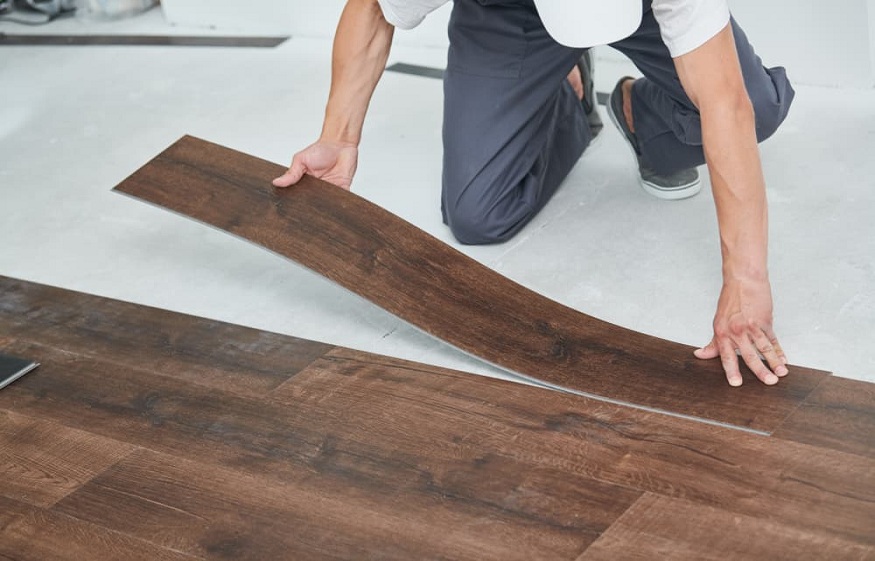Knowing the durability of vinyl flooring and how to improve it are factors that we must consider in all types of projects, whether residential, commercial or corporate. Like any other type of floor, you should know if choosing vinyl flooring will satisfactorily meet the characteristics of use and traffic in the environment for an extended period.
How long does a vinyl floor last?
No matter how many estimates manufacturers can make, the reality is that there are so many variables that can increase and mainly decrease the useful life of a vinyl floor that this assumption is complicated to materialise in practice.
Taking a position on the durability of vinyl flooring is risky, as it can lead people to believe that they can do anything about it without worrying about the consequences for 15 or 20 years.
What is the durability of vinyl flooring, and how to increase it?
What you should remember is that caring for the floor begins with purchasing the correct model through proper installation and intended use daily.
How do make vinyl flooring last longer?
As we said, your vinyl flooring will last longer if you choose the suitable model by balancing what you want with what you need. It is essential to know the specifics of this coating, which can only be used in internal areas, and external environments, not even think about it!
You also cannot specify vinyl for use in shower bathrooms, as this frequent contact with moisture will shift the tiles in the future. On the other hand, this coating works very well in sinks!
It is also necessary to know well the characteristics of use and the traffic of each environment since busier places need extra protection – such as, for example, a layer of service with the correct thickness – to last.
The wear layer is a polyurethane (PU) layer applied to the surface of Luxury Vynil Tile (LVT) vinyl flooring. Wear layers over 0.7mm thick are generally intended for commercial projects with heavy traffic, while for residential projects with light traffic, the minimum required is 0.15mm.
Installing the floor correctly.
It is essential in this context since the vinyl needs to be in good condition both to resist and to be well finished. It is necessary to be careful, especially with unevenness and humidity problems.
Before installing, it is essential to correct undulations and unevenness. If they are up to 10 mm, in a single layer with the Tarkomassa, the problem will be solved.
If the subfloor is already level, you can use the Tarkomassa Preparation to regularise minor imperfections. If the idea is to go much faster, you can also count on the Tarkomassa Fast plan, which allows application on ceramics and porcelain without needing a primer, with ultra-fast drying after two hours.
Frequently cleaning your vinyl floor directly impacts its durability; therefore, never stop following the step-by-step indicated by the manufacturer.
A frequent mistake is forgetting to sweep the floor before starting the cleaning with a damp cloth. Some people do not dry the floor after applying the neutral detergent diluted in water. All this decreases the useful life of the coating.
Speaking of water, only glued-down vinyl flooring can be washed, as long as you don’t forget to wipe up puddles – wash and then wipe dry with clean, dry cloths. Fitted models can never be washed, as the water drains through the joints and accumulate on the subfloor.
To prevent scratches from appearing on the surface of your siding, avoid dragging furniture across the floor and always protect furniture feet with felt. For pieces with wheels or work chairs, we also recommend using polyurethane wheels.
What not to do so that the vinyl floor lasts less?
Never choose a vinyl floor whose characteristics are inappropriate for that environment and project profile because that incompatibility will reduce its useful life.
Planning for these scenarios is essential. It is always best to enlist the help of architects and interior designers not only in the specification but also in design planning – thus avoiding significant material loss.
Professional labour is equally vital in the installation, as trained installers who are used to this type of coating will prevent you from making some of the common application mistakes we list in this publication.
The do-it-yourself is desirable in various ways in architecture and decoration. Still, this fun moment of experimentation of the inhabitants in installing floors – even those not vinyl – is not usually triumphant, even because we typically don’t have the right tools and skills for this.
Although the correct purchase and a well-done installation are relevant to durability, it is in the cleaning habits that people make the most mistakes and end up reducing the useful life of the floor – mainly because they take time to realise that, instead of helping, they may be making the situation worse.
It is essential to avoid specific products such as solvents and other petroleum derivatives – learn about other common cleaning mistakes here. Vinyl flooring is made mainly of PVC, and the meeting between petroleum derivatives usually results in chemical reactions that wear away and thus permanently damage the surface.
If you have a lot of natural lighting at home, such as on gourmet balconies, look for flooring lines that offer extra Protection against UV rays, such as Tarkett’s LVTs with Extreme Protection technology.
Extreme protection makes the floor more resistant to fading while saving time and resources since it implies less use of water and chemical products. It closes this porosity so that, compared to models without protection, it has seven times fewer pores, facilitating cleaning procedures in the same proportion.
Whatever floor is chosen, curtains and blinds will always be necessary to filter the sun’s rays in these rooms, especially those with large glass windows.
Now it’s easier to take care of your vinyl floor. Follow our advice; you can inevitably count on it for a long time.

